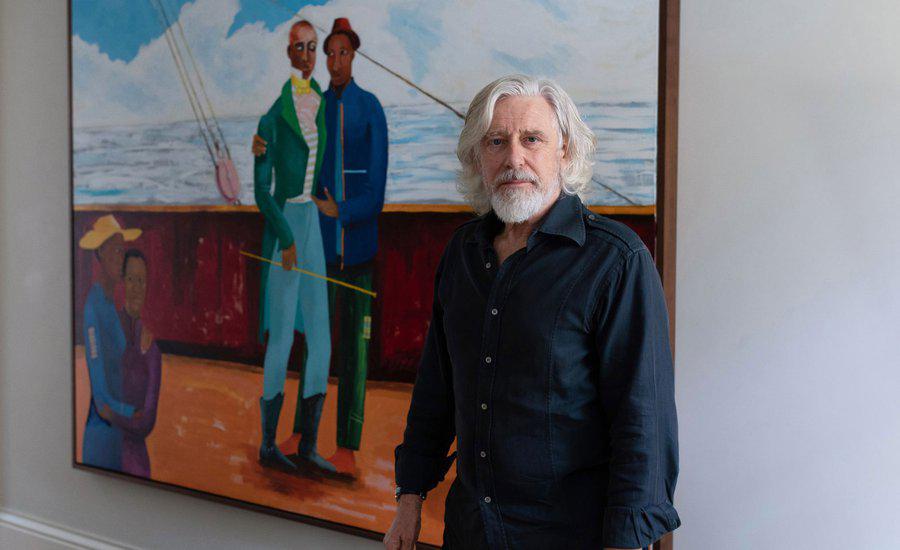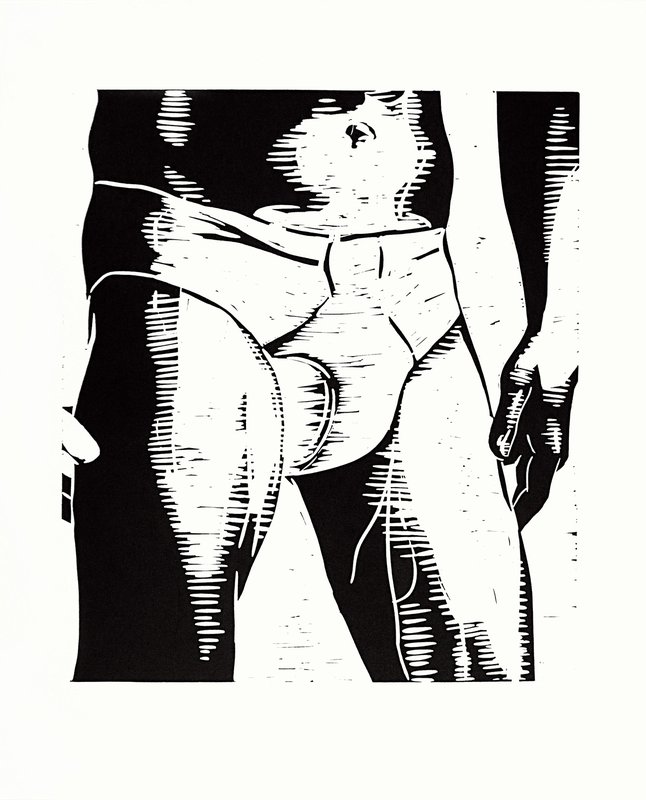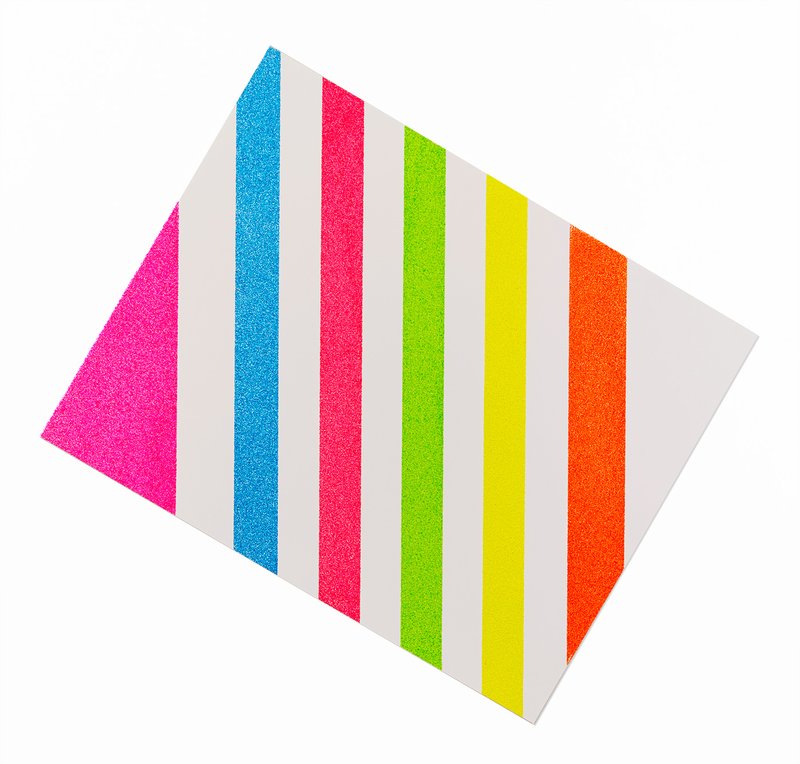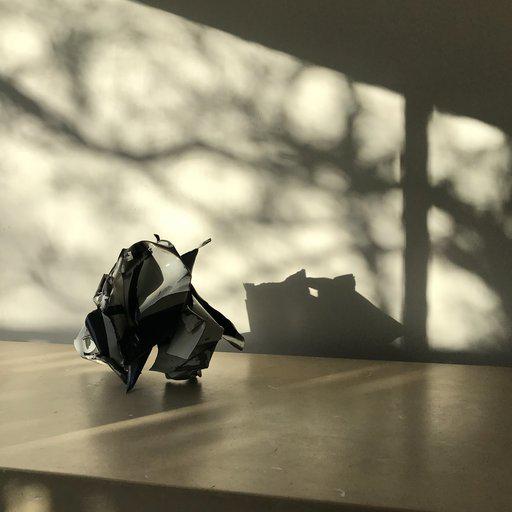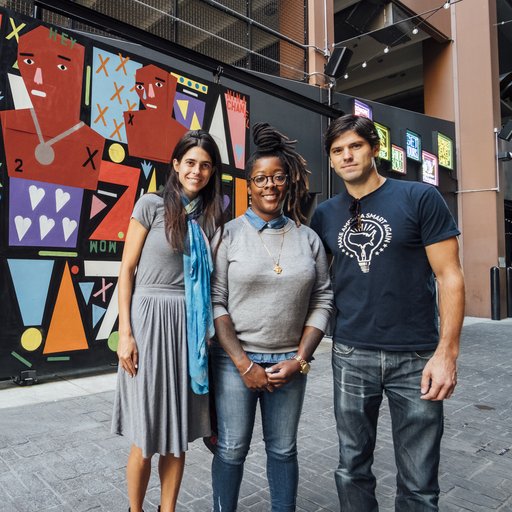As a founding member of U2, one of the world’s most successful bands, the British-born bassist Adam Clayton has both the capital and the creative insight to collect and appreciate contemporary art. Just don’t call him a collector. “I’ve an uncomfortable relationship with being called a collector because of everything that comes along with it,” explains the 61-year-old bassist. “I frame myself first and foremost as an enthusiast because I think that implies that you are curious and interested in the expression and in the practice. Once you get into words like collection, that is when intellect and financial firepower come in.”
Rather than view himself as an artworld trophy hunter, Clayton prefers to see his love of art as pleasantly habit-forming. “If part of being a collector is acquiring things that are essentially pristine and arrive in a certain kind of order, or tell a certain kind of a narrative, then yes, I think that works on the way my brain is wired,” he goes on. “I definitely have that addiction of pushing further, of wanting to know more, of wanting to add to what I already have. I’m probably more of an addict than I am a collector.”
 Sonia Gomes -
Weaving Tomorrow 1
2016 - photo courtesy Adam Clayton
Sonia Gomes -
Weaving Tomorrow 1
2016 - photo courtesy Adam Clayton
That contemporary-art dependence has led the musician to strike up relationships with quite a few of the artists whose work he collects. “I tend to go for similar works,” he admits. “I very much shoot from the hip. I don’t think too much about the big picture. Many people make their collection their life’s work and it’s curated and presented in a certain way. I just enjoy the interaction of visiting artists, getting to know artists, and getting to know their work. I would say we tend to acquire maybe four or five things by an artist we like and then we move on. It’s not done in any curated way.”
Clayton’s wife, Mariana, is Brazilian, so she has the great grasp on Brazilian artists, he explains. “Brazilian art and music inform the western eye and ear; it really works together,” he goes on. “If I do describe myself as an addict it would be all those things: furniture, glass, ceramic, painting, sculpture - all the things that give us pleasure.”
That omnivorous approach to culture goes back to Clayton’s early days on the road with U2, even if the place he looks for his fix has changed over the years. “I realized that early on that music was part of a cultural exchange but it wasn’t the whole story,” he says. “You have to take everything into account and as we clock up the years and we no longer go to clubs and bars in the way we used to, I look for those things in other places now. I still I have a need for bohemia and I find that in visiting artist studios, If I’m on the road and I’ve got a day off or something I’ll find out who’s around and go for a meal or a studio visit see what shows are on and that has become the dialogue that I enjoy now. In London there are quite a lot of non-profit galleries that we support: Delfina, Gasworks, Chisenhale and Studio Voltaire. These are places I like to check in and meet young artists and see what people are doing.”
After decades collecting art and following artists, Clayton has seen the market change. “I think what’s happened in the last twenty years is that it has actually filtered down a bit, probably from people being able to check out things online,” he argues. “People are more visually educated now and that’s great and the repurposing of objects for design and functionality is something people understand much more, it’s not so intimidating anymore. I think the difficulty with a lot of the fine art world is that it can put culture in the hands of the museums and rich people.”
While Clayton is at home among the cultural elite, he also treasures his earliest engagements with art, in a much less formal setting. ”I was always a bit of a ‘messer’,” he says. “The art room [at school] was always a place where you could get away with a lot of doing nothing, so that was where I spent most of my time. And in those places I found boys who were into music and art and clothes and all that stuff so it became the place where I began hanging out.”
Indeed, a keen eye for cultural semiotics helped Clayton survive, when he was sent away to boarding school, aged eight. “I don’t know if everyone would agree with this, but at the age of eight, an all-boys boarding school can be a pretty aggressive, scary place,” he says. “For whatever reason, I got pretty good at visually figuring out who were the cool boys, who were the bad boys, and who were the boys to avoid. I suppose the code was really what people wore - how they walked, and the shape that they threw. I think if you had the sensitivities of looking around at your environment you figured out what was the cool shoe, or shape for your trouser, or whatever - and it was your uniform as such. I knew I wasn’t going to be a jock, I wasn’t going to make it on the rugby team. I was with the boys who liked flower arranging, and drawing and stuff like that. And as such we had our own code regarding how to survive without getting beaten up!”
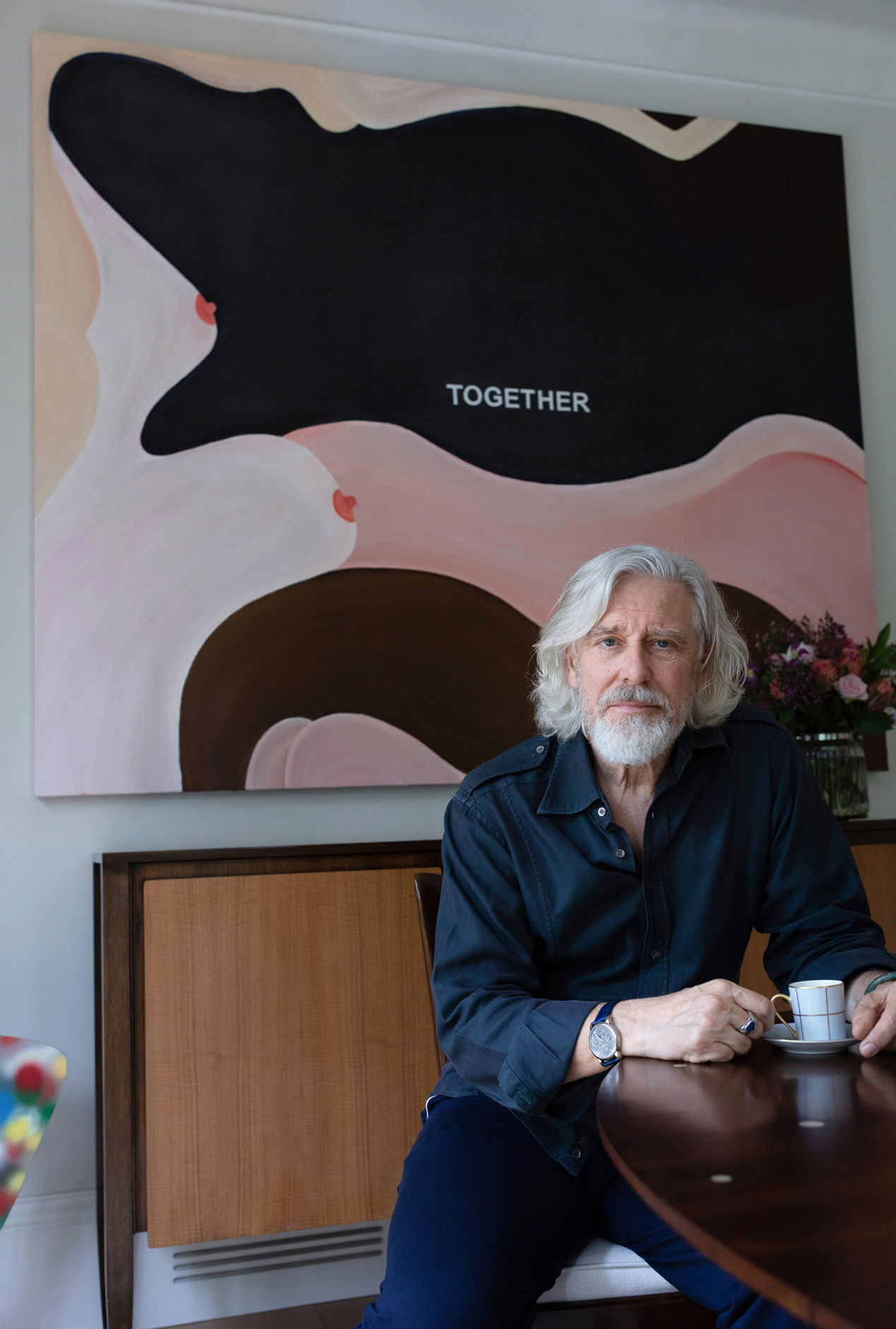 Adam Clayton - photo by Ross Stewart
Adam Clayton - photo by Ross Stewart
Cultural forces also helped him find a place in the world, when cues from the school system began to fail. “From the age of 13 or 14 I very much knew I wasn’t going to be part of the regular world,” Clayton recalls. “I suppose, had I completed my education I would have tried to go to art school. I probably would not have got in and would have ended up as a commercial photographer or a van driver! It’s hard to know, but I left school at the age of 17 without completing my education. When the Stranglers and Patti Smith and the Clash came along that seemed to have a profound effect on my molecules.”
That effect was both aural and visual. “I think album artwork would have been very much the first thing that would have influenced my eye, because album covers told a story,” he says. “But the other thing I think informed me visually was American TV shows, because in the Seventies nobody knew what New York, or LA, or Miami looked like. And so it was this mixture of Americana coming in through music, coming in through television and movies, that all started to give me a visual language that was familiar much, much later when I ended up going to America.”
Indeed, it was while in the US that Clayton started viewing and buying art seriously. “When I started looking at art in the late 80s, early 90s, what I was influenced by, or drawn to, was that period in New York where music and art was getting mixed up and the graffiti movement was just starting,” he remembers. “I think I was also drawn to female artists who seemed very much underrated. I found the absence of testosterone really nice, and as I started to engage with them, I realized their criteria for creativity was very different. Certainly a lot of them used to say, ‘we had families; we couldn’t sit around and waste our creative time. If we had two or three hours in the day we had to use it.' Certainly, I find art generated by women much more engaging, interesting and meditative.”
Tht focus on meditative and engaging works remains true to this day. Read on to find out more about his early enthusiasm for Irish painters, how Robert Mapplethorpe taught him to appreciate the male body, and which Wilhelm Sasnal work he will break the bank for, next time it comes up for sale.
 Alexandre da Cunha -
Public Sculpture (Drums1)
, 2016 - photo courtesy Adam Clayton
Alexandre da Cunha -
Public Sculpture (Drums1)
, 2016 - photo courtesy Adam Clayton
The art on the walls of the family home My mother liked to think she had somewhat of an artistic eye - and she probably did - but she had no resources at the time. We had been a sort of itinerant family, living first in Africa, and then Singapore. I was a pretty seasoned traveller. In my first ten years we lived in Kenya, we lived in Zambia, Singapore and even Tel Aviv for a short period. In each of these places my mother always collected a carving or a piece of folk art. I think a lot of it was the usual things that they sell to tourists - wooden carvings of African animals and that sort of thing. But they were always beautiful things to hold and handle. My first love when I started to buy art was very much sculpture and I guess you could connect that back to those early experiences.
My father had been in the RAF and had flown very early jets. He’d been stationed in Aden, in Yemen, and he was involved in the Suez crisis. Because they were flying these jets someone had taken photographs through the window. At the time I didn’t quite realise, but now, when I look back on it, that that was a very strong visual image for me, these black and white photos of planes doing acrobatics.
I think they suggested an exotic world - the Middle East. And I think there was probably a lot of baggage in there that I must have locked on to in some way. They were also quite surreal. Some of the photos were taken inside in the cockpit, so you’d get all that biographical and documentary detail as well. Actually, they still hang in my father’s house. After the time in Aden he’d come out of military aviation and gone into civil aviation. There were few jobs around, which is why we ended up moving around so much, eventually settling in Ireland when I was a six-year-old.
 Jack Butler Yeats -
Jazz Babies
, 1929 - photo courtesy Adam Clayton
Jack Butler Yeats -
Jazz Babies
, 1929 - photo courtesy Adam Clayton
First gallery or show that blew his mind I grew up in Dublin and at that time I would have gone to the National Museum and in the National Museum I would have come across the works of Jack Yeats who was quite an influential painter. Visually the work was abstract but expressionist. He was the brother of WB Yeats, so culturally in Ireland it made sense. Also they had work by William Orpen and Sir John Lavery, these were images I was aware of. So when I had an opportunity to buy art, that was where I went to begin with. And again my mother encouraged me to look at Irish art.
 Diane Arbus -
Untitled 7,
1970-1971 - photo courtesy Adam Clayton
Diane Arbus -
Untitled 7,
1970-1971 - photo courtesy Adam Clayton
The first pieces he bought The first painting I bought was a Jack Yeats picture. It was called Jazz Babies and it was a picture of what we would call a shebeen but it was a basement jazz club. But instead of having a New Orleans jazz band, it had a jukebox with jazz records in it. That was my first proper piece of art and I loved that picture! It was certainly the most amount of money I had spent on anything at that point! I don’t think that ever changes, that slight difficulty of trying to figure out how or why a piece of art is worth that amount of money. And, of course, you always have to reconcile that it is worth that amount of money and you can either afford it or you can’t. That was the mid-Eighties and it was the beginning of me really buying quite a lot of Irish art: Jack Yeats, William Orpen, John Lavery, Colin Middleton, Walter Osborne Paul Henry. But then after a while I started to think: this doesn’t really represent who I am, it’s not really my passion or what I’m interested in.
 Herb Ritts -
Louise Bourgeois, New York
1991 - photo courtesy Adam Clayton
Herb Ritts -
Louise Bourgeois, New York
1991 - photo courtesy Adam Clayton
So I relocated to New York at the beginning of 1990 and at that time the art market was not as developed as it is now and you could ask a lot of questions, and find out the galleries to go to, and get an introduction. There was an Irish artist friend of mine called Catherine Owens, who has subsequently done a lot of the design for our live shows. She brought me to Robert Miller’s gallery, which I loved. He was Louise Bourgeois and Robert Mapplethorpe’s gallerist. He had Joan Mitchell at the time too and although back then I didn’t maybe understand her work, it definitely opened my eyes. He also had Jean-Michel Basquiat who I would say is the next significant artist that I bought, along with Louise Bourgeois. They were two of the artists who absolutely informed the way I looked at the world from there on in. I just loved the rebellion of what Basquiat was doing. A tragic story, a tragic life, and then Louise Bourgeois, this older French woman who was just trying to take back her family in a sense, and nurture herself, and everyone else she came into touch with.
 Robert Mapplethorpe -
Cock and Devil,
1982 - photo courtesy Adam Clayton
Robert Mapplethorpe -
Cock and Devil,
1982 - photo courtesy Adam Clayton
In the early Nineties I lived on the Upper West Side which was still quite grungy then - the real estate prices had not come up. Which is why a lot of interesting people chose to live there. It was not cleaned up into the middle-class yuppie thing it’s become. In a funny way, the apartments there really lend themselves to that sort of art. it was very easy to place things and I think in that period my buying spree, if it could be called that, consisted of sculpture, Basquiats, photography, Mapplethorpes.
In a way Robert Mapplethorpe was under appreciated at the time, or maybe people were just scared of the power of his images. I suppose from growing up in boarding school, I’d never been one to let my eye rest too long on a penis either erect or flaccid. But when you see his work and the way he loves the male body - as a man you suddenly go, ooh! I can be beautiful. It is beautiful; it’s actually a good thing.
I think probably in men you know… we mature pretty late! And if you happen to be in a band touring the world it takes you even longer to mature. In the Nineties I would have been around thirty but suddenly I started to see the male form in a way that I had never appreciated before. Mapplethorpe taught me that.
I bought a lovely portrait of Ken Moody, one of Mapplethorpe’s models, which I still love. Whatever way Mapplethorpe lit the skin, and however he printed, you just get this great depth and warmth off it. Also Mapplethorpe was interesting in that he was the first photographer who said: ‘No, I’m a fine artist, I want to be taken seriously as an artist. I do not want to be seen as a commercial artist. Everyone who has come after him, and who has been considered a fine artist, right up to Wolfgang Tillmans today owes a debt to Mapplethorpe.
 Stan Douglas -
Pembury Estate,
2017 - photo courtesy Adam Clayton
Stan Douglas -
Pembury Estate,
2017 - photo courtesy Adam Clayton
The great thing about photography in some ways is that it’s so immediate. It’s about the intellectual ability of the photographer to edit that becomes important, rather than just their ability to be creative, so they’re always vibrant. And if they’re on it, they’re really on it. At the time there was a photographer called Lee Friedlander, I looked at some of his work, I was obviously aware of Herb Ritts for his fashion work. His skill is great it’s just that his wasn’t necessarily a fine art skill. I saw some Diane Arbus at that time and I discovered a New Orleans photographer called Clarence John Laughlin. He was actually an architect who, when photography started to emerge as a chemical process, got very interested in it. He photographed the mansions of the south in disrepair, in a post-slavery world where the plantations were no longer functional. They’re very, very powerful images. That was one of those instances where I found something that was evocative and articulate but at the same time it wasn’t mainstream. I wish the artworld was still a bit like that - that everything wasn’t so mainstream.
The other photographer at the time that I liked, but perhaps didn’t appreciate enough at the time, was William Eggleston. He’s a giant but at the time color photography wasn’t much considered. I was travelling to LA to do some recording and I diverted to Memphis and dropped in on him and he’s quite a character. William had some very unhealthy interests - not politically correct at all - but that’s the way things were back then. But he loves his music, he loves playing the piano. More recently I've become interested in Richard Mosse and Stan Douglas.
 Roni Horn - W
ater Double, v.2,
2013 - photo courtesy Adam Clayton
Roni Horn - W
ater Double, v.2,
2013 - photo courtesy Adam Clayton
The piece everyone comments on Particularly with modern media there’s a lot of material that artists use that can sometimes be a bit of a liability to live with it. I’m a bit traditional - I do like bronze and wood and canvas and paint. However, the one piece that always gets a ‘wow’ is the Roni Horn glass work in our house in France. There was a Tate retrospective a few years ago that featured some of them. They are these huge lumps of glass, made, I think, at the Zeiss factory in Germany - so in effect they are a giant lens. They look almost liquid and so people go up to them and ask, Is it water? can I touch it? No it’s not water, and no you can’t touch it! But what’s interesting is that when you look through them, you can’t tell where the floor underneath them actually is. Ours is on a terrazzo floor so it magnifies the terrazzo, giving you this complete loss of dimension. It looks like infinity. It’s a really wonderful work and we were very lucky to get one a few years ago when they were just about affordable.
 Martin Creed -
Work No, 745,
2007 - photo courtesy Adam Clayton
Martin Creed -
Work No, 745,
2007 - photo courtesy Adam Clayton
The artwork in the kitchen We have a piece by Martin Creed in our kitchen. I love his obsessiveness and the way his works are numbered. He did an exhibition in the Douglas Hyde Gallery in Trinity College here about five years ago and he asked the runner to go out and get him as many different green pens as possible. It’s this tradition that he has where he will just use one felt tip pen to color a whole piece of A4 paper. I think they got 19 different color greens and he then set about making 19 different pictures with all the felt tips. When that show came to an end I thought it would be an awful pity if that left Ireland. 19 is an odd number to hang, but it sits in our kitchen here and it’s just a great thing to see. Martin always brings a smile to my face. I think the thing about putting art in the kitchen - because it’s usually a room where you spend more time in than you admit to - it has to be a work that gives you pleasure when you’re sitting having a coffee. And that’s really my tip for art in the kitchen: make sure you can see it when you’re in your comfortable spot.

Adam Clayton with Wilhelm Sasnal Anka, 2001 - photo by Ross Stewart
The one piece he’d buy if it ever became available I’m a big fan of Wilhelm Sasnal. And what I like about Wilhelm is that culturally he’s Polish, which I think is an interesting aesthetic because of what Poland has been through. But he’s influenced by pop culture. I love the fact that he works from photographs for his source imagery and he always puts some kind of political spin on whatever show of work he’s doing. Whatever political story is of the moment you’ll find that Wilhelm has addressed it somehow in an artwork. I think that’s a great thing for artists to do and I applaud that in his work. One of his favorite subjects is his wife Anka. There’s an image of her on a beach in a bikini and that is the one image of Wilhelm’s that, if it became available, I’d definitely break the bank to acquire.
The piece that got away I think he’s possibly an artist’s artist, but Thomas Schutte did a series of pieces a few years ago which were these very large sculptures sitting on steel benches which were very functional looking, made with iron and girders and with a lot of right angles. When you put them outdoors they would quickly rust and turn orangey red. I like them because of their duality – the difference between these solid workmen benches and then these delicate feminine forms sitting on them. Very powerful. If I were to get one, I would have to put it in Ireland, I think it would suit that climate very well as it’s not so dissimilar from the climate in Northern Germany.
 Fender Precision bass guitar - photo courtesy Adam Clayton
Fender Precision bass guitar - photo courtesy Adam Clayton
The thing that’s not art, but is to him For me it has to be the electric guitar - in my case the electric bass. I can remember when my grandparents first got a television. seeing Top of the Pops or Ready Steady Go and seeing these funny men with electric guitars that were all shiny and glittery. And that must have really gone in. There are many choices of instrument a bass player can pick up but I went back to the Fender Precision bass - the first electric bass guitar designed by Leo Fender which is pretty much unchanged. It does the same job today as it did in 1950 when it was invented. It gets the job done. There’s a beauty in the curves for me, and the way it sits on the body. Then there’s something glorious about those sparkly nickel chrome fittings. And then, finally, it’s the sound of it! I don’t know why those low bass frequencies mean so much to me, I guess it’s just the way some of us are wired - we hear that kind of stuff. I think the power of music is voodoo - you don’t know why it communicates but it does. And, of course, I’ve gone on to own quite a lot of bass guitars – you can never have enough!

Adam Clayton - photo by Ross Stewart
What someone might deduce about him from his collection I tend to like figurative work! I don’t know why I’m constantly drawn back to figurative work - the face or the body or whatever. Maybe you’re constantly in a dialogue with your own humanity when you have that kind of work around you. For me, the job of art is to connect us to our humanity, and make us honor that in some way. Obviously figurative work also warms up spaces. If you look at things in an architectural sense, I feel that if you’ve got square straight lines you don’t want artwork that’s made up of square or straight lines as well.
The piece that reflects where he is now A few years ago, Marlene Dumas did a show of fallen heroes. It was about the vulnerability of people having failed themselves and everyone else. There were two Phil Spector pictures in the series. One of him looking cool and groovy as we once knew and loved him, and then there was his police mugshot - without the wig. That was the one I was drawn to because of the vulnerability of it. And that picture sits in our sitting room and I look at it every day. What’s interesting for me is that this is Phil at the end of his life realising - if indeed he did realise - that what he had done was going to absolutely and cataclysmically change his life. It didn’t matter how good his records were; it wasn’t going to make any difference.
 Marlene Dumas -
Phil Spector - Without Wig,
2011 - photo courtesy Adam Clayton
Marlene Dumas -
Phil Spector - Without Wig,
2011 - photo courtesy Adam Clayton
I love the apparent speed of the creation of the image; she doesn’t seem to have labored too long over it, it’s emotionally direct from her on to the canvas. Whilst I don’t feel that I’m ever likely to be in that same situation, I do feel that situation. And when I look at that picture I remember that it is always good to be aware that yes, you can make great records, you can do huge tours and you can mean a lot to a lot of people but you still can’t lose that sense of who you are. And that vulnerability that we have is something to be cherished and held on to. Never be afraid to ask why, never be afraid to ask for help. You know this is good advice for anyone at any stage in his or her life. Entitlement is the enemy. It has done so much damage and it’s so ugly.
 Louise Bourgeois -
Nature Study 4 (Scroll with Hands)
1985 - photo courtesy Adam Clayton
Louise Bourgeois -
Nature Study 4 (Scroll with Hands)
1985 - photo courtesy Adam Clayton
The artwork he'll leave to someone he loves Hugely difficult to answer. But it would probably be one of the original Louise Bourgeois pieces that I bought in New York in the early Nineties, Nature Study 4 . It’s not necessarily a major Bourgeois piece but it has such power and strength. I would love to be able to pass that on to our daughter Alba who is now three-and-a-half. It’s like a three-point star, wrapped in this liquorice like substance which for me represents our little nucleus of a family - the three of us. And I love the way that this sort of black material wraps this family of three together and then emerges as an arm with a hand on the end. For me that just represents everything that Louise’s work was about – family, and creating and some sort of intimacy and nurturing. I always feel that it encompasses her message and her art which is about nurturing the soul.











